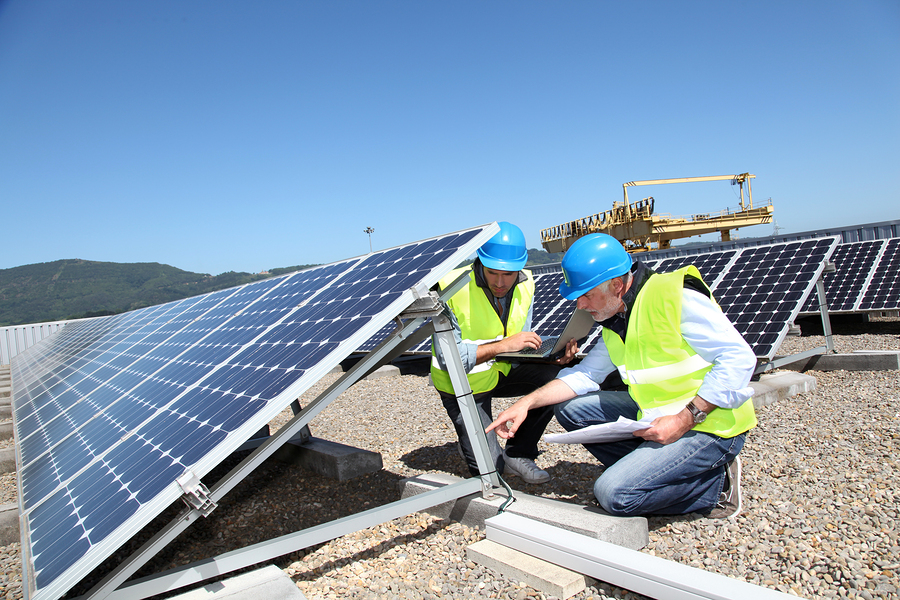What could be more reassuring for a future engineer than to launch into a market that has seen a growth rate of 2340% in ten years (from 2005 to 2015). Indeed, the market for photovoltaic (PV) solar energy is booming in Canada and will continue to develop for the coming decades, despite its still-prohibitive cost in 2017. What does the work of a photovoltaic engineer consist of? Which degrees target this position? But before we dive into this world, a bit of terminology…
Demystifying the terms of the solar industry
Historically, the sun is a source of passive energy, which heats various living spaces without any equipment. With the current trend in renewable energy, engineers strive to use the sun as a source of active energy, using equipment to convert this radiation into heat (thermal solar energy) or electricity (photovoltaic solar energy). Immediately consumed, storable in batteries or incorporated into the electrical network, this source of energy has the benefit of being clean (no pollution), respectful of wildlife – including migratory birds, unlike wind power – and of the planet – although the greenhouse gas emissions from assembly of photovoltaic cells remain deplorable. Solar energy is therefore promoted to tremendous growth, especially in distant and cold regions, but remains very dependent on incentive policies to offset the high cost of production (23 cents per kWh in 2016). So it is not surprising that Ontario, which offers the highest guaranteed feed-in tariff program represents 98% of solar capacity in Canada.
The sun in your day
Whether it is investing in a solar panel manufacturer, a design engineering firm for green buildings or a maintenance company, the photovoltaic engineer will always have the duty to reduce his client’s electricity bill and carbon footprint (individual, company, community, farm, etc.) by offering the best solar energy system possible. His work revolves around the following tasks: assessment of the client’s energy efficiency; solar system design (for example, solar heating system, solar hot water system) by taking into account the requirements and constraints related to the structure, the local climate or solar technology; selection of components; design of the system and mechanical and electrical connection points; writing reports and specific applications such as building permits; site analyses, etc. The PV engineer will often work in a multidisciplinary team, hence the importance of having a certain expertise in construction and building thermals, good computer and computer aided design skills as well as real writing skills. These positions are filled, in 75% of the cases, with graduates holding at least a bachelor’s – or master’s (7%) – degree in mechanical engineering, ideally with an option in renewable energy or solar energy. As for salaries, according to a study conducted by Eco Canada, an energy engineer will begin on average at more than $80,000/year and may reach $150,000 after several years of experience.
Today, we cannot deny that the possibilities offered by the sun are significant, as Henri Le Saux said several decades ago: “The sun only rises for he who goes to meet it.”
